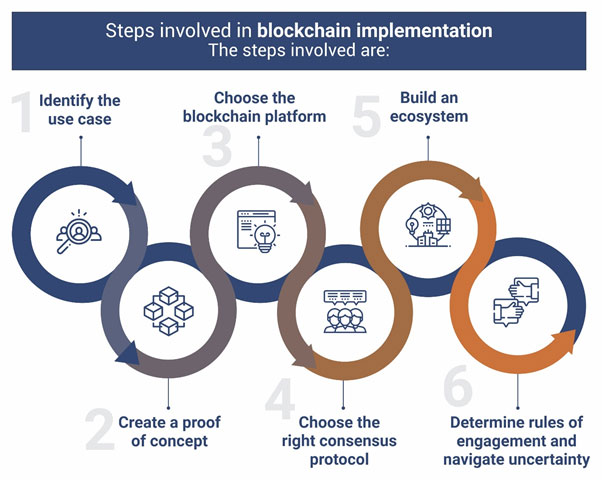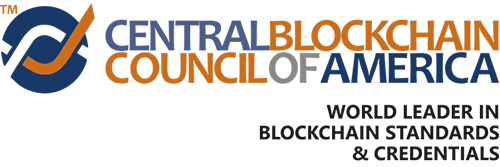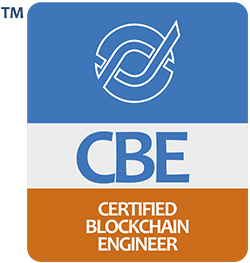Jun 08, 2021
Blockchain technology has every potential to bring more trust, efficiency, and transparency to day-to-day transactions. As a result, industry leaders are planning budgets for it and making pilot projects for their organizations. CBCA helps uninitiated blockchain leaders by discussing the steps and challenges of implementing blockchain technology within an organization.
Blockchain initiatives across industries are growing faster these days, and implementing blockchain technology is a part of a company’s transformational journey.

84 percent of executives use blockchain in their operations at least to a certain extent. However, implementing blockchain poses its own challenges. It is highly recommended to implement in phases considering the present situation and future plans of the organization. Let’s see how.
Steps involved in blockchain implementation
The steps involved are:

1. Identify the use case
The first step is to identify, clarify, and organize your needs. Understand the exact problems you want to solve and confirm whether implementing blockchain solutions will help to solve them. It is recommended to start with a pilot project, analyze the results, and then implement them on a larger scale.
PwC recommends these key questions that companies should consider before implementing blockchain technology.
-
How does blockchain disrupt the business?
-
Is the purpose of the business application understood?
-
Is the technology resilient, scalable, and secure?
-
What are the impacts of blockchain technology on the market?
-
How does blockchain reduce cost or improve customer service?
-
How should blockchain be governed and administered?
-
Are we considering a 3-5-year plan for blockchain?
PwC studies further caution that putting the effort now and applying them in the next IT budget cycles will avoid “regret spend” later on.
2. Create a proof of concept
Once you identify the use case, it is essential to create a valid Proof of Concept (PoC). PoC is nothing but a strategic procedure to evaluate how blockchain would be feasible for the business. Understanding the planning phase and evaluating steps direct you to create your Proof of Concept. Here are the steps to create a proof of concept.
-
Develop a set of guidelines
to explain the business project
-
Create a prototype
to involve design, code, sketches
-
Test the prototype
to understand the business happenings
-
Analyze the MVP
to incorporate the top features
3. Choose the blockchain platform
Some of the popular blockchain platforms include:
-
Ethereum: determines the potential growth rate of the business
-
Quorum: eliminates the data tampering in business transactions
-
Hyperledger Fabric: creates private blockchain applications for businesses
-
Stellar: develops applications for companies and organizations
-
Corda: make direct transactions through smart contracts with full security
-
Open chain: maximizes each aspect of business’s human resource management
-
Multichain: optimizes human resource work at the professional level
When choosing a blockchain platform ascertain whether the technical team is organized and they have an open-source station. The platform should suit your budget too. The transition from a successful proof of concept to full-scale implementation is challenging for both governments and enterprises. Therefore, it is necessary to consider these factors:
-
Gaining a general level of understanding of the technology by business leaders
-
Creating a strategy and vision for blockchain technology usage
-
Engaging with regulators to establish clarity and stability as well
This assurance will help to realize the tangible benefits as promised.
4. Choose the right consensus protocol
In a distributed network, consensus protocol alone can create an indisputable system of agreement between the devices. Take a look at the wide variety of consensus protocols available.
-
Proof of Work
Counters cyber-attacks such as DDoS and validate transactions to produce new blocks
-
Proof of Stake
The developer is selected for the subsequent block by combinations of random qualifications such as age, wealth, and performance.
-
Delegated Proof of Stake
Ensures transaction approvals as a fixed set of miners are involved in the activities
-
Byzantine Fault Tolerance (BFT)
Achieve consensus by depending on the same value even when the network components are unresponsive.
-
Proof of Weight
Achieve agreement by depending on the weight of the cryptocurrency the miners have.
5. Build an ecosystem
Blockchain technology is at its best when stakeholders take part. However, to create a new industry ecosystem, a community within an organization is the need. Because they can understand the technology’s potential and improve standards and rules.
PwC reports that the stakeholders decide the rules, ensure the costs and benefits, use the right control framework, affirm governance mechanism, audit and validate the blockchain functionalities. Here are the steps to build an ecosystem.
-
Start with smaller ecosystems
Build a blockchain with a few stakeholders who can expand it later on
-
Find a community
Broaden your network through blockchain consortia and explore more industry applications
-
Conduct a competitive analysis
Analyze competitors or new entrants and look for partnership potential
-
Standardize data with a robust governance
Develop standard naming conventions and system-wide data models
6. Determine rules of engagement and navigate uncertainty
The new blockchain ecosystem should solve the organization’s issue and comply with the processes. privacy implications, compliance, and cybersecurity issues must be addressed. Or else, the ground processes might be forced to get redesigned. PwC suggests that businesses must comply with emerging blockchain policies and best practices while monitoring evolution in regulations. Here are the key plans.
-
Confront risks
Involve cybersecurity, compliance, and legal team to blockchain development team while building a framework.
-
Consider privacy implications
Invest in data and its processes. Data immutability is an important feature of blockchain and it should fit into privacy strategies like GDPR.
-
Use current regulations
Stay agile. Current regulations are applied in different ways. So, stay agile to adapt and remain compliant.
-
Monitor evolving regulation:
The laws pertaining to data usage and protection keep changing and depend on blockchain operations. So, involve regulators.
Case Example:
Building a blockchain identity management solution
Project scope:
Usually, organizations that operate under strict privacy regulations develop identity management solutions. For that enterprise blockchain is highly recommended. Allocate budget with a reasonable schedule.
Selection of blockchain platform:
Use of Hyperledger Fabric is recommended here as the platform has several advantages such as pluggable consensus algorithm and membership services.
Build a team:
The new project should comprise of business analysts, UI/UX designers, Hyperledger Fabric developers, testers, and the project manager.
Choose Blockchain-as-a-service (BaaS) provider:
Choosing a BaaS provider like IBM is recommended. Because IBM blockchain platform handles the infrastructure, networking, storage. Moreover, you get access to development tools, score a secure and fully-managed platform. Plus, you have flexible pricing plans with 24*7 support.
Write smart contracts:
Smart contracts in Hyperledger fabric is known as chain codes. Code them using languages such as Node.js, Golang, or Java.
Use development tools and guides:
With the IBM blockchain platform, you can use Hyperledger composer to develop blockchain apps, Node.js SDK and write chain codes.
Manage the build, test the code, and deploy:
You can use Continuation Integration (CI) tools, docker containers, and test your code by using IBM’s platform before release.
Project management:
Appoint a project manager who can manage end-to-end by using project management best practices.
Challenges faced while implementing blockchain
You may face the following challenges while implementing blockchain and establishing the system for the long run.
1. Difficult user interface
All of the clients you handle may not be good at using technology. If your system is simple, you can attract maximum customers.
2. Scarcity of skilled blockchain developers
The blockchain industry experiences a low supply of skilled blockchain developers. Smaller businesses may have to offer competitive incentives to attract and retain blockchain experts.
3. Varying blockchain regulation
The regulations keep changing and are updated often. The challenge is how one should consider and incorporate the regulation effect in their organization activities.
4. Scalability issues
The scalability issue is still there, though there are several approaches suggested in the literature to improve scalability. Blockchain bridge forms a link for interaction and communication between blockchain systems and might overcome scalability issues.
5. Security issues
The 51 percent attack theory has made blockchain vulnerable to several threats from hackers. It is the most disturbing issue every organization faces to date.
6. Speed
Transaction processing speed (TPS) is again one of the major bottlenecks that hamper mass commercial adoption of blockchain.
Conclusion
Amid these challenges, the situations are favorable. More research work is going on to overcome these challenges. The attitudes toward blockchain technology implementation are becoming more elaborate as blockchain leaders, blockchain engineers, and industry leaders are showing more interest. Most of the organizations are committing budgets for blockchain. Implementing blockchain from scratch is hard but viable for several cases.
All these boils down to building the right team for blockchain development. The right team is essential to take forward the organization’s mission. Though it may look like a little costlier investment, a good development team will save time and money as they reduce the risks to a greater extent.
If you are a beginner interested to know more about the technology, then start with blockchain certifications. Earning a certification enables you to stay current with the trends, acquire the knowledge and skills the industry experts look for!










